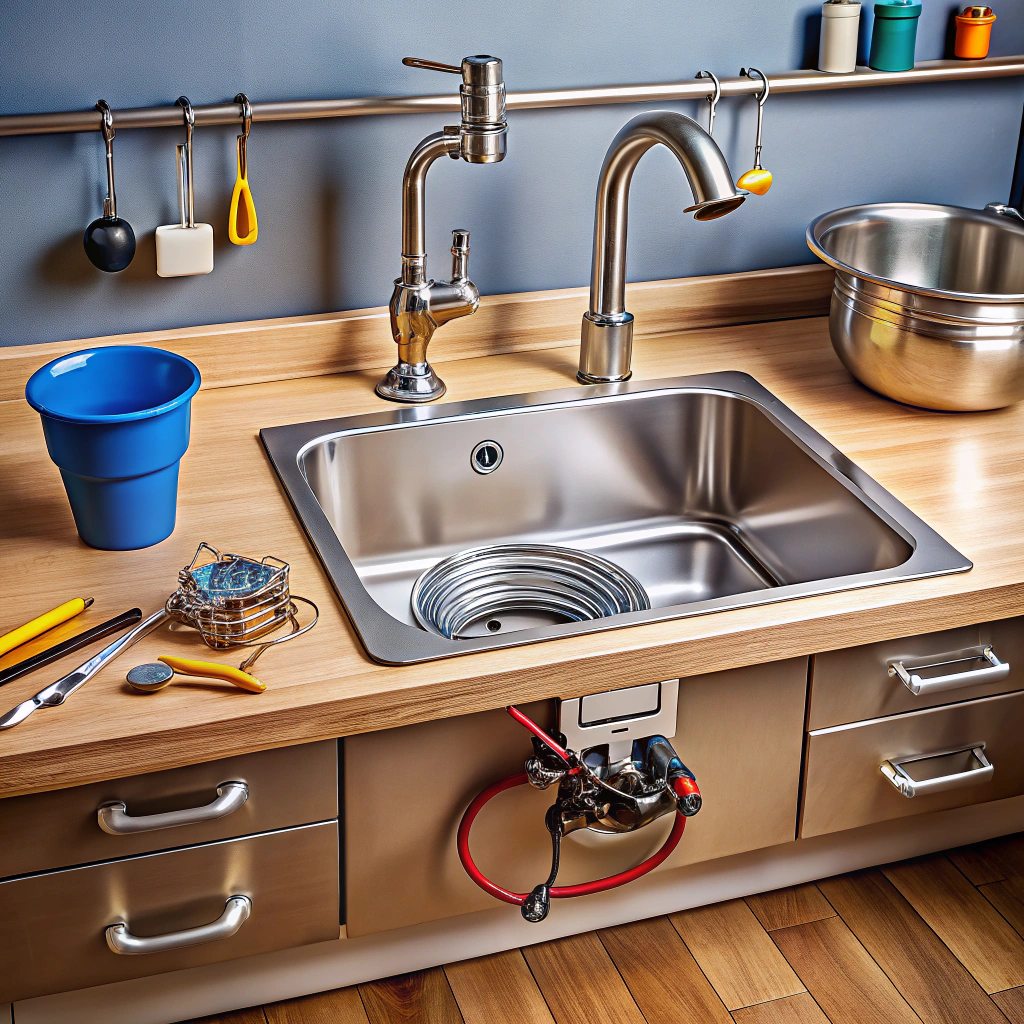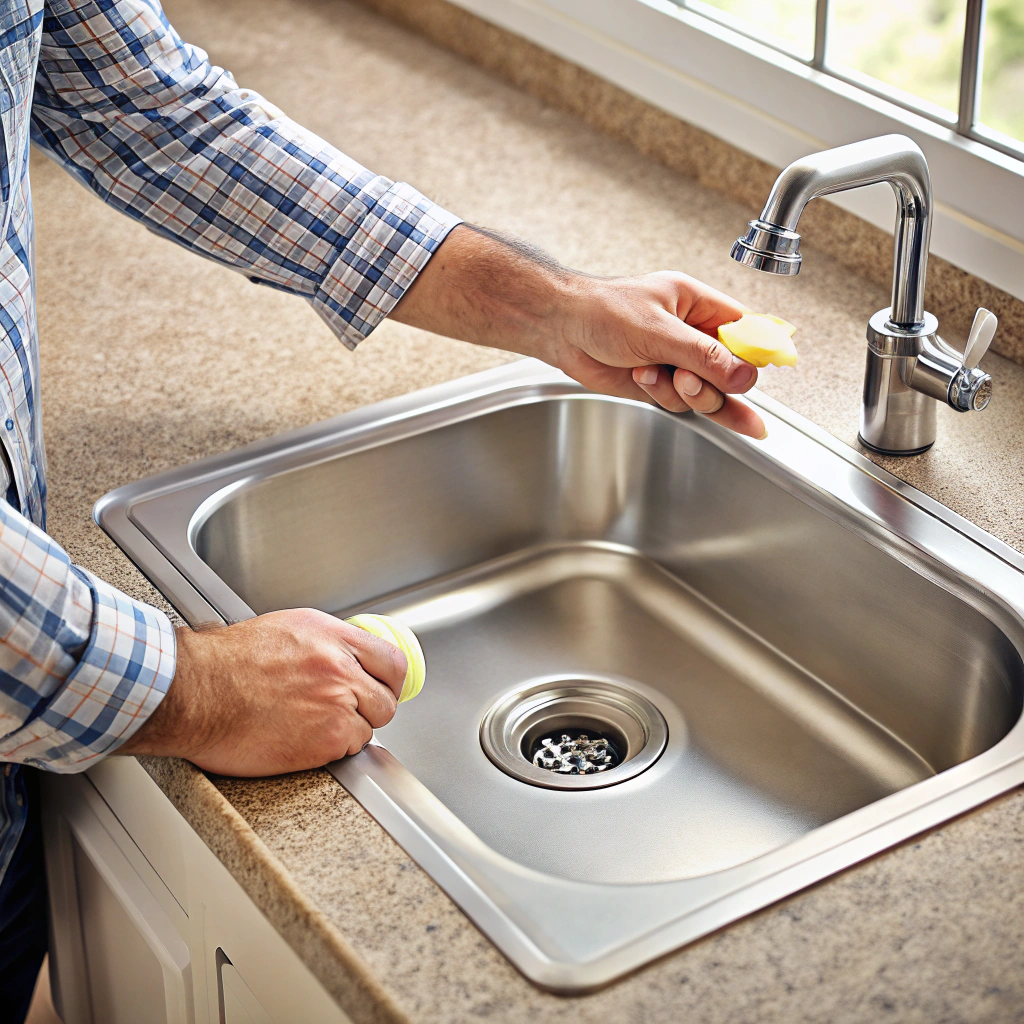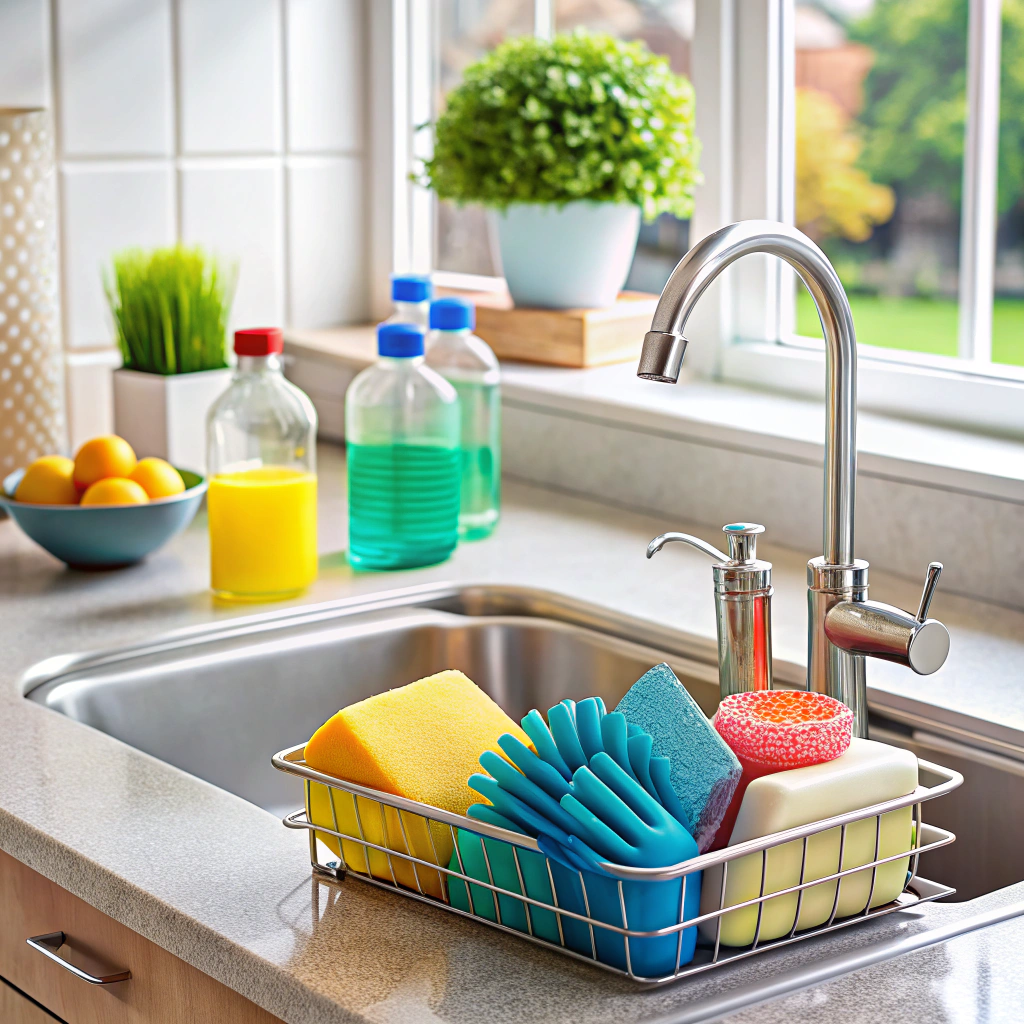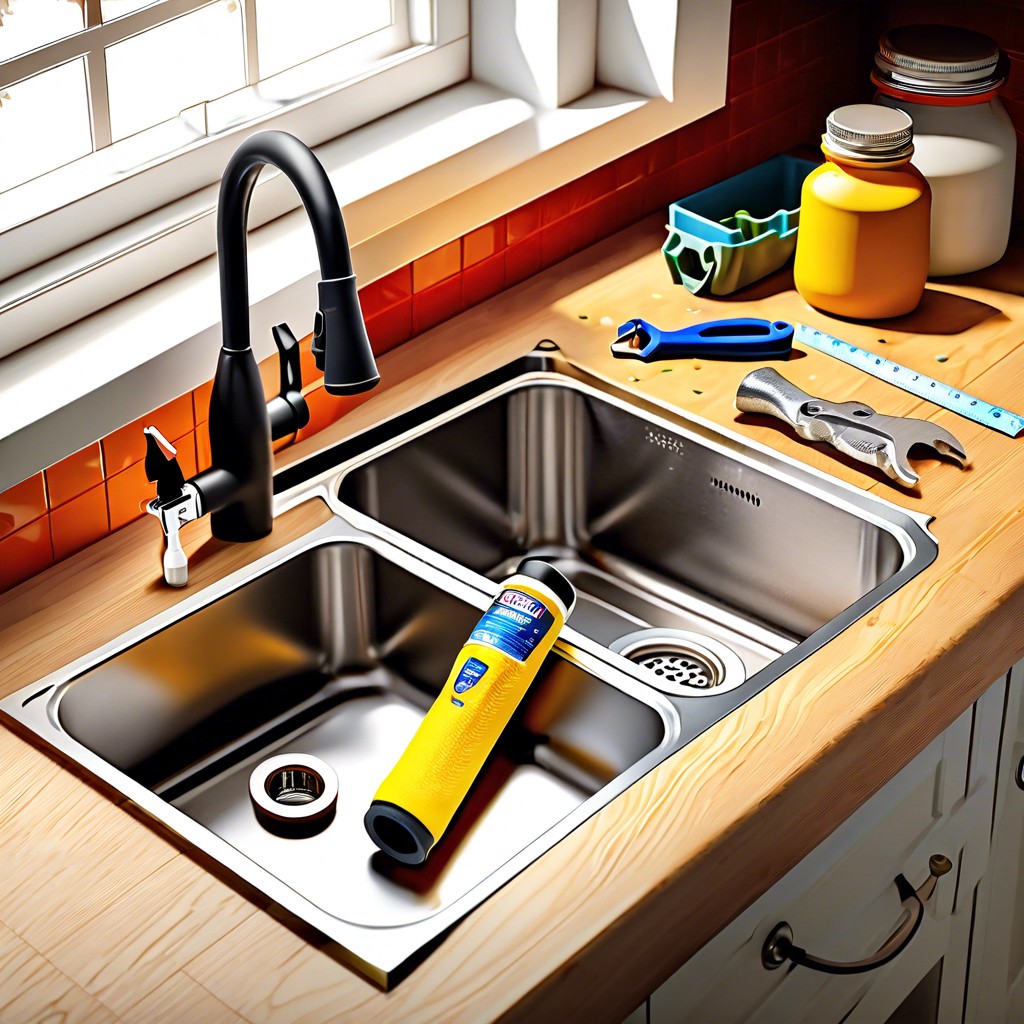Last updated on
Choosing the right sink size for a 30 inch cabinet may seem like a daunting task, but it becomes effortless when equipped with the right knowledge because it significantly impacts the functionality and appearance of your kitchen.
Key takeaways:
- Sink size impacts functionality and aesthetics of the kitchen.
- Factors to consider: interior width, depth, countertop thickness, lifestyle.
- Minimum sink base size: 27 inches wide, 24 inches deep.
- Standard sink sizes for 30-inch cabinets: 27 to 29 inches wide, 8-9 inches deep.
- Material considerations: stainless steel, porcelain, granite composite, cast iron, copper.
What's Inside
Why Sink Size Matters
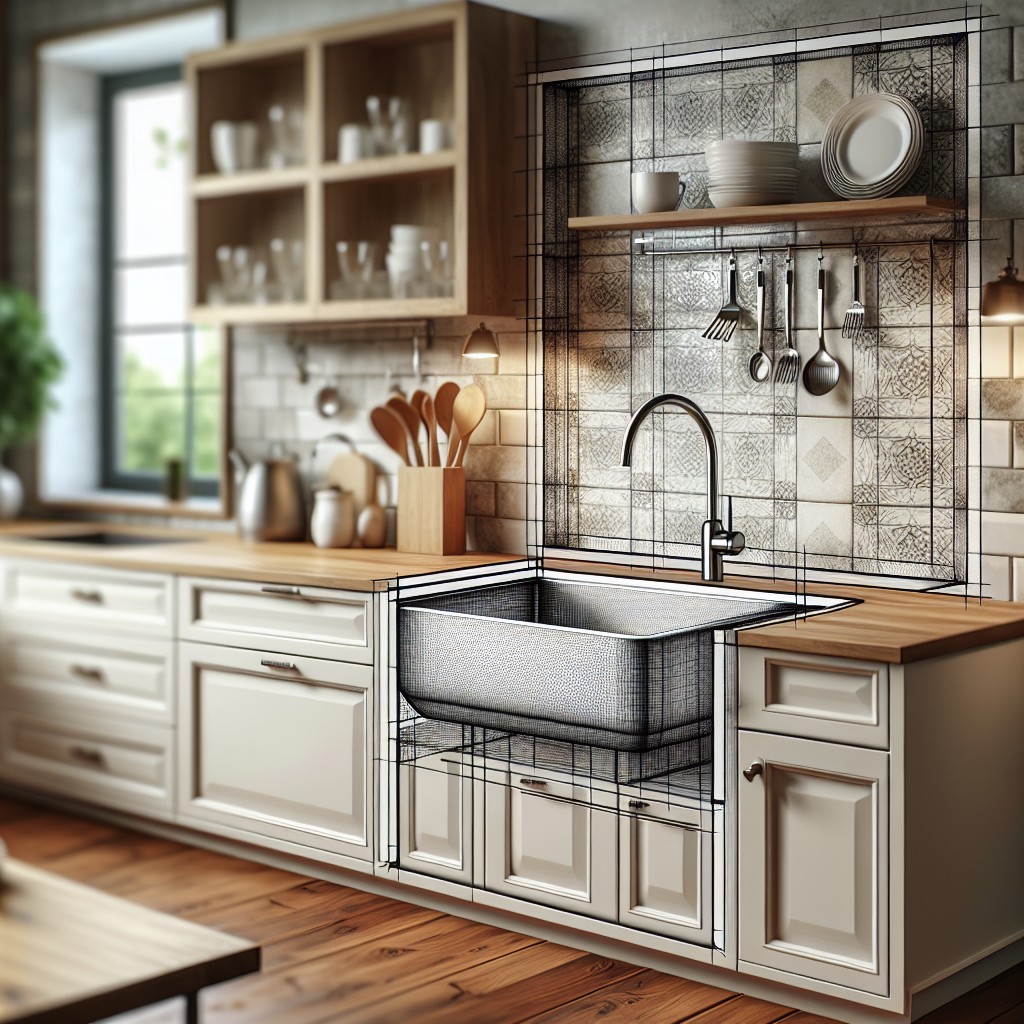
Selecting the correct sink size impacts both functionality and aesthetics of your kitchen. A rightly proportioned sink balances with the scale of the cabinet and ensures ample countertop space.
It also determines how comfortably you can accomplish tasks like washing dishes or soaking large pots. Moreover, the sink size can influence the under-sink storage, accommodating plumbing, and potentially a garbage disposal unit.
Get the dimensions right, and you create a seamless kitchen workflow, marry practicality with design, and make the most of your cabinet real estate.
Factors to Consider
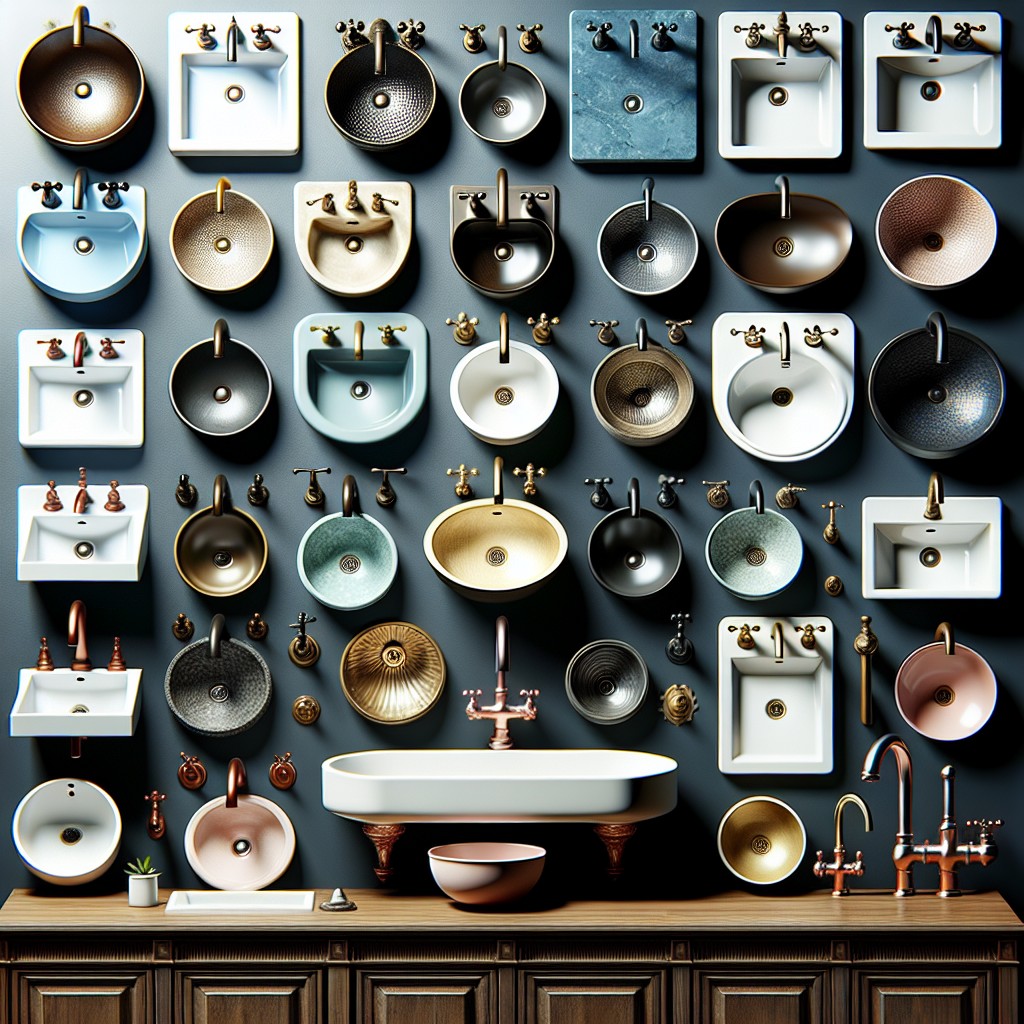
Selecting the ideal sink size for a 30-inch cabinet hinges on multiple considerations beyond mere dimensions. It’s crucial to factor in the interior width of the cabinet, which typically measures around 28.5 inches, allowing for the sink to easily fit within this space.
Be mindful of the depth of the sink as well. Deep sinks may require more room underneath, potentially impacting storage or plumbing arrangements. Keep an eye on sink undermount or drop-in requirements, as they can dictate the necessary lip and affect the overall fit.
The thickness of the countertop should also be on your radar. Heavier materials like granite or quartz might need more support, potentially reducing the available space for your sink.
Lastly, your lifestyle plays a significant role. Consider how you use your kitchen. High-volume cooks might prefer a larger, single bowl to accommodate pots and pans, while others might opt for a smaller, double bowl for multitasking. Balance practicality with personal preference to ensure your kitchen sink complements your daily routine seamlessly.
Minimum Sink Base Size
Understanding minimum sink base size ensures a proper fit without the need for cabinet modifications. Most manufacturers recommend a sink base that’s at least 3 inches larger than the sink itself.
For a 30-inch cabinet, this means your maximum sink width should ideally be 27 inches. This 3-inch leeway allows for the necessary room for installation hardware and adequate clearance around the sink basin, ensuring the structural integrity of your countertop and cabinet.
Keep in mind that depth is also crucial; ensuring there’s enough front-to-back space in your cabinet is paramount. A typical 24-inch cabinet depth pairs well with most sink models designed for a 30-inch cabinet.
Remember to factor in your countertop’s overhang, which can reduce the depth available for your sink. Always consult the sink’s specifications and the cabinet’s interior dimensions to confirm compatibility before making a purchase.
Standard Sink Sizes for 30 Inch Cabinets
For optimal fit within a 30-inch cabinet, standard sink dimensions are typically 27 to 29 inches in width, leaving enough room for installation and proper function. Notably, depth and length can also impact whether the sink will fit comfortably without compromising the integrity of the cabinet structure.
A single-bowl sink in this setup generally has a depth of around 9 inches, while maintaining a length that doesn’t exceed the interior width of the cabinet.
When looking at double bowl sinks for a 30-inch cabinet, individual bowl widths are narrower. Be cautious of the center divider placement, as it needs to align properly with plumbing connections. Double bowl sinks designed for these dimensions are often around 8 inches deep to prevent overcrowding and to ensure easy installation.
Space allowance for mounting hardware and necessary attachments should also be factored in. Keep an eye out for the minimum cabinet size specification from the sink manufacturer—they typically offer a clear guide on the required dimensions to avoid any fitting issues during installation. Always aim for a snug and secure fit, allowing the sink to be both functional and aesthetically pleasing within your kitchen layout.
Single Bowl Vs. Double Bowl Sinks
Deciding between single bowl and double bowl sinks involves assessing kitchen habits and space usage.
A single bowl sink, generally larger and deeper, is effective for soaking and cleaning oversized pots and pans. Its uninterrupted space makes it ideal for tasks like batch cooking or meal prep.
Conversely, a double bowl sink offers the flexibility of multitasking, with one side available for dirty dishes while the other can be used for food prep. It’s beneficial for those who prefer separating clean and dirty dishes or want to dedicate one sink to a garbage disposal unit.
Keep in mind, within the constraints of a 30-inch cabinet, a double bowl sink will have smaller individual bowls. Prioritize your everyday kitchen activities when choosing and consider how the sink will complement your workflow.
Material Considerations for Sinks
Selecting the right material for your sink is as important as the dimensions you choose. Here’s what you need to weigh when browsing through materials:
- Stainless steel: Durable and easy to clean, it’s a popular choice that blends well with many appliances, though water spots and scratches can be noticeable.
- Porcelain or ceramic: These offer a classic look and are available in various colors. They are also stain-resistant but can chip if heavy objects are dropped on them.
- Granite composite: A mix of granite stone dust and acrylic resins makes it resistant to scratches and chips. It also dampens the noise of dishes, but it’s generally heavier, requiring secure cabinet support.
- Cast iron: Enameled cast iron is durable and comes in many colors. It’s heavy and may need reinforced cabinetry; it also retains water temperature well for soaking.
- Copper: With natural antimicrobial properties, copper sinks provide a distinctive aesthetic that can develop a patina over time, requiring special care.
Consider how each material’s features align with your usage habits, aesthetic preferences, and durability needs. Your choice will directly impact the sink’s look, upkeep, and longevity within your kitchen’s daily routine.
Corner Radius and How It Affects Fit
The corner radius of a sink refers to the curvature of the corners where the sides meet the bottom. This might seem like a small detail, but it plays a crucial role in determining whether a sink will fit snugly in your 30-inch cabinet.
- Tighter Radius: A sink with a tighter radius has more squared-off corners. This style maximizes usable basin space but requires precise cutouts during installation. Ensure your cabinet has enough interior width to accommodate the straighter edges.
- Larger Radius: Sinks with a larger radius have more rounded corners, which can make the sink easier to clean. Additionally, they typically require less exact cutouts, providing more wiggle room during installation.
- Sink Base Impact: The corner radius also affects the size of the sink base. More rounded corners mean the sink can have a larger base within the same exterior dimensions, while sharper corners can decrease the base size.
When choosing a sink, bring along your cabinet measurements and keep in mind that the corner radius could affect both the sink’s capacity and the ease of installation. Opting for a model that complements your cabinet’s dimensions will result in a harmonious fit that looks intentional and professional.
Installation Type Recommendations
When selecting a sink for your 30-inch cabinet, the installation method is a detail you can’t afford to overlook. Here’s a quick dive into options and what they entail:
- Top-mount, also known as drop-in sinks, are the easiest to install, with their rims resting on the countertop and requiring minimal support underneath. This style suits those looking for a simple DIY upgrade.
- Undermount sinks provide a seamless look and make countertop cleaning a breeze. However, they need sturdy support from below, as the weight hangs from the countertop material.
- Farmhouse or apron-front sinks are a statement piece but will likely require a customized cabinet to accommodate their unique front section.
- Integrated sinks, crafted from the same material as the countertop, provide a smooth, uniform appearance. These are generally custom jobs and may not be an option for standard 30-inch cabinets unless the countertop is also being replaced with a compatible material.
Keep in mind that the choice of installation impacts not only aesthetics but also the functionality of your kitchen workspace. Choose a style that complements your cabinet and aligns with your usage needs.
Workstation Type Possibilities
Opting for a workstation sink in a 30-inch cabinet ushers in multifunctionality, harnessing the most out of limited counter space. These sinks come equipped with ledges within the basin to accommodate cutting boards, colanders, and drying racks.
When exploring these possibilities:
- Look for workstation sinks specifically designed for 30-inch cabinets. These will optimize space while still allowing for the integrated use of accessories.
- Consider the depth of the sink as well; deeper basins can offer more room vertically, compensating for narrower widths.
- Assess the included accessories. Premium workstation sinks often come with a range of tools tailored to fit seamlessly into the sink’s design.
- Remember that the additional features of a workstation sink require precise installation. Inaccurate cutouts may impede the functionality of the sliding accessories.
- Lastly, since workstation sinks are more complex than standard sinks, ensure compatibility with your existing plumbing and hardware. Adjustments may be necessary to accommodate the new system.
Choosing the Right Sink Size
With the foundational knowledge of sink sizes that fit your 30-inch cabinet, making the final selection should be a smoother process. Here are some pointed tips to guide you in nailing down the perfect fit:
- Measure Twice: Ensure you have accurate internal cabinet dimensions before settling on a sink. Consider the space needed for mounting hardware and ensure that the sink will sit comfortably within the cabinet, typically leaving at least 3 inches of clearance.
- Function Over Form: Think practically about how you use your kitchen. If you’re an avid cook who juggles multiple pots and pans, a larger single bowl might make more sense than a smaller double bowl.
- Keep It Compatible: Double-check faucet placement and make sure the sink you choose can accommodate your preferred faucet, soap dispensers, or other accessories.
- Future-Proof: If you plan to upgrade your countertop or appliances in the future, opt for a versatile sink design that will accommodate potential changes.
- Visual Balance: Consider the visual weight of the sink in relation to your kitchen’s layout. A sink that’s too small might look dwarfed, whereas one that’s too large may dominate the space unnecessarily.
By being mindful of these points, you’ll ensure your chosen sink not only fits physically but also suits your lifestyle and aesthetic preferences.
FAQ
What size sink for a 30 inch sink cabinet?
For a 30-inch sink cabinet, the maximum suitable sink size should not exceed 27 inches in width.
Can you put a 30 inch farmhouse sink in a 30 inch cabinet?
No, you cannot put a 30 inch farmhouse sink in a 30 inch cabinet as the base cabinet should be 2-3 inches larger than the sink size.
How much bigger does a cabinet need to be than a sink?
The cabinet should be approximately 2-3 inches larger than the sink for an optimal fit.
Can you put a 33 inch sink in a 33 inch cabinet?
Yes, it is possible to fit a 33-inch sink into a 33-inch cabinet by using a strap or harness for correct placement.
What are factors to consider when selecting a sink size for a 30 inch cabinet?
When selecting a sink size for a 30-inch cabinet, consider factors such as the interior cabinet size, the depth and width of the sink, the installation type, and the amount of counter space available.
Do undermount and drop-in sinks have different size requirements for a 30 inch cabinet?
Yes, both undermount and drop-in sinks have different size requirements for a 30 inch cabinet.
How does the type of material of the sink affect the size fit for a 30 inch cabinet?
The material of the sink doesn’t affect the size fit for a 30-inch cabinet, it’s the dimensions of the sink that need to match the cabinet size.

